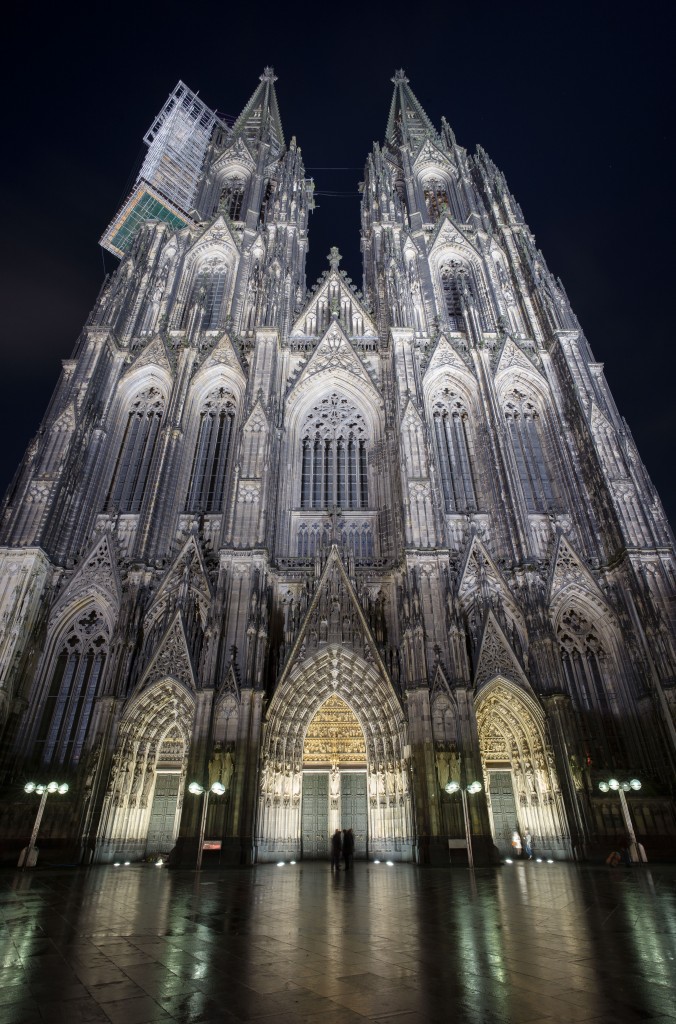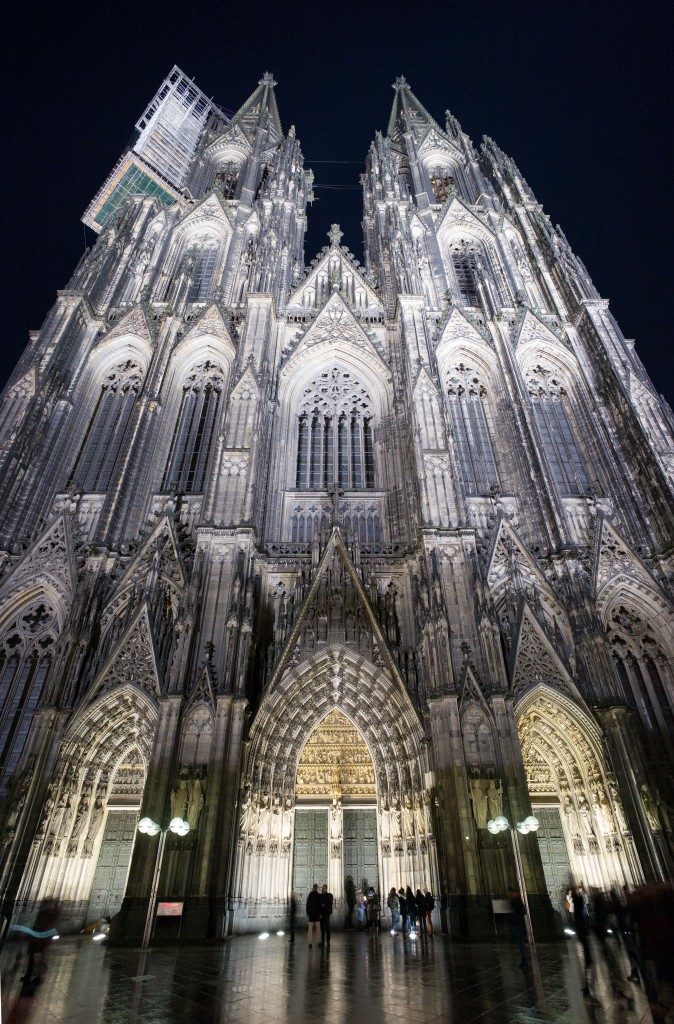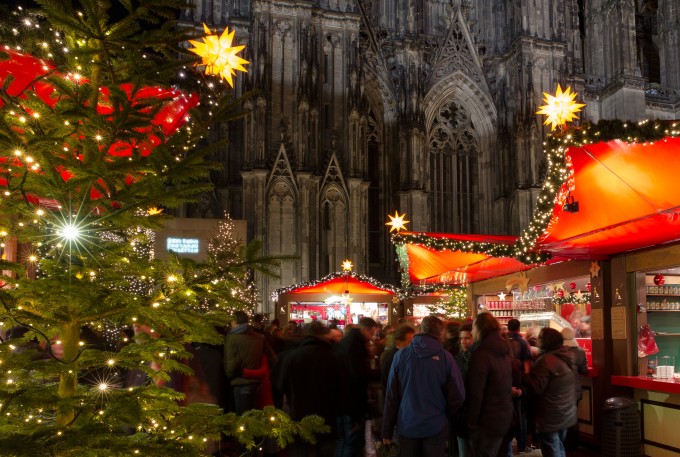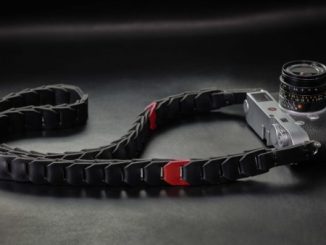M240 NIGHT PHOTOGRAPHY
By George Sutton
A recent post showed some photos taken with an M240 in New York at night. It generated a lot of comments, some quite snarky. There appeared to be a problem with skin tones and many commenters declared the camera useless for shooting under artificial lights while declaring their Nikons, Canons and Sonys would do a much better job. I own both a M240 and a Canon 5DIII with Canon’s best L lenses and my experience has been very positive shooting both cameras at night. The only difference I see is slightly better star effects from the Leica lenses, which may be due to the absence of an AA filter. Low ISO performance is excellent with each camera.
I perviously owned an M9 and it was a great camera but the high ISO performance was noisy, much more so than the M240. The following photos were taken in Cologne, Germany last December at the Christmas market held next to the Cologne cathedral. The cathedral is one of the most magnificent in Europe. Cologne is in an industrial region and I suspect air pollution has badly stained the outside of the cathedral. In daylight it is very dark and doesn’t photograph very well but illuminated at night it is spectacular. Below are two shots taken with my M240 on a tripod set to auto white balance, one at ISO 400 and the next at ISO 2500. Following is another photo I took at ISO 400 in the market next to the cathedral. These are the colors as they came out of the camera. Judge for yourself if the camera is up to the job.
Leica M240 with 18mm Super Elmar at f4, ISO 200, 8 second exposure:
–
Same shot at ISO 2500, .5 second exposure:
–
ISO 400, f8, 1.5 second exposure:
Again, none of these have been color corrected. This works fine for me. The Canon would do as good a job but not better and would be harder to carry around. I carry my Leica in a small backpack. I also tried a Sony A7r and it took a great photo but not better than the Leica or Canon and I returned it, mostly because the autofocus was poor and more of a hinderance than a useful feature.







As an independent post, this post is fine. As a post that references a previous “controversial” post, it doesn’t make sense to me. If the original post generated a debate about the M240 skin tones at night, then logically a follow up post should have addressed that. This post shows a couple of buildings and doesn’t really add anything to the original debate.
Again, on its own there is nothing wrong with this post. I just don’t see the point of acknowledging the previous post in the body of this one.
Nice shots. Your intro suggests they’re intended to debunk what you saw as unwarranted criticism of the camera’s color balance and skin tones. They don’t. Your subjects aren’t colorful and there are no people. The shots are good but if you’re gonna call us snarky you could at least prove us wrong. 🙂
Fair point. I included the last shot to show more colors and there is a face or two in there but it is not much of an example.
Oh for goodness sake. The man, Sutton, is trying to be nice, even handed and objective. You are in fact snarky and I wonder why. Your comments say a great deal about you, but nothing that is meaningful about photography or equipment.
Maybe he’s a “j*rk” Jack.
On a more serious note, I commented earlier that the lighting seemed less of a challenge than Times Square. Still good colours though.
Read back on all my comments in the other post. I explained my concerns with the M240 color balance in an honest, detailed way. I ribbed Mr Sutton a bit here, and he took it in the good natured-way intended. I complimented his pictures and he seems to concur that his shots don’t address the criticisms he was addressing in the intro. I’ve been working for a couple of months with pink/red/overexposed skin tones from this camera and hope my observations will help others. I also don’t think I was mean or disrespectful. If anyone wants to discuss the merits and shortcomings of the M 240 I’d be happy to. I know the camera well and I’m not an amateur. Just don’t expect me to sugarcoat anything for the silly reason that I don’t want people who don’t know me to call me “snarky” or a “j*rk,” okay?
Sorry Gene, you mistunderstood me. The “j*rk* thing is a quote from one of many of our Swedish friend’s snarky posts, where he called me a “j*rk” (after I advised him to be a little less agressive). I’m not in the habit of name calling on the net, or anywhere else.
Anyway, as you will have noted from my earlier posts, I agree with you.
Hi Gene, actually, I think this does address the points raised in the intro to an extent, or at least I meant it to (not the first time I was not clear). I read the original post as raising an interesting question about whether the camera is producing a wrong color cast when shot at night. In the earlier post was not clear whether the colors were wrong or just caused by the artificial colors of the lights illuminating the scene. Faces were only part of it. Some commenters thought there was a strong magenta cast to everything, which I have not found in any of my shots. That is what I meant to show in the shots I posted above. But I did get some wrong colors in other night shots. Shots I took at one site of a Roman ruin illuminated at night came out yellow. It was easily corrected post processing. At this point it appears to me that the camera’s AWB is tricked by some kinds of lights, but not others. Just my experience, for what it is worth.
Thanks Michiel for the clarification and thanks George,
Fair point. I agree that certain environments throw the camera for a loop but I’m not convinced that the problem is AWB and not color balance. It might even relate to increased dynamic rendering. The camera seems very sensitive to different temperatured light sources in the same frame; variations in hue sometimes seem unnatural compared to other cameras. I notice it picks up variants in skin tones, like red noses and red cheek mottling and sets them apart from the rest of the skin in a way that can be tough to correct. The M9 had this problem, too, but where the M240 differs is that skin tones are sometimes too bright, almost like there’s not only too much red, but the red is prone to blowing out. I get shots where everything is properly exposed but the skin is overexposed. This makes me think it might be a mix of color balance and dynamic range issues—plus maybe some user error on my part.
🙂 Peace.
Lovely night shots
No doubt the 240 is a very good and capable night camera
Try Sony RX1R! It has better WB,autofocus and macro for $2700.00
Sergey, I’m glad you brought this up. Actually I did try the RX1r, and mentioned that above. It is a very good camera, just as Steve said in his review. But I found it is not the camera for me. Among other things, note that the shots above were taken with an 18mm lens. I was standing at the very edge of the plaza in front of the cathedral and could not zoom any further with my feet. I couldn’t get these shots with a RX1r, or Leica X2, or Fuji X100, or any other camera with a fixed 35mm lens. I prefer interchangeable lenses or a good zoom. The point of this post is to say that I have found the Leica works well shooting at night, and at other times as well, contrary to the comments in an earlier post that the camera has a severe magenta cast at night and other color problems. I deliberately stayed away from saying mine is bigger than yours or anyone else’s. I am just talking about the Leica, and as an actual user I have found its color quite good. I hope this is useful information for anyone with a shooting style similar to mine who is considering whether to try a M240. I would have never tried anything beyond a DSLR if I had not read about all the other good choices at sites like this and I hope this post helps someone else. Finally, I also have a Sony RX100 and I know it has excellent white balance and I had no complaint about the RX1r but I am quite satisfied with the color in the shots above and generally with my Leica. As for autofocus, I have grown to prefer manual focus for stationary subjects like landscapes. I can get consistently more precise focus manually if the subject isn’t moving. If I am shooting a moving subject I prefer a DSLR. I have tried many mirrorless cameras and have yet to find one with autofocus that can keep up with my 6 year old grandson. My Canon DSLR nails the focus much more often and the camera fires when I press the shutter instead of lagging for a few seconds while it tries to lock the focus (unless I am using live view and the autofocus there is so bad I turn it off). That isn’t a diss on other cameras. I know they work well for others. Mirrorless autofocus systems are improving all the time and I’m sure the differences in autofocus will be gone or insignificant in time. What I would like to see end is the comments like “my Sony will wipe the floor with your Leica!”. It is such BS. Let’s appreciate that there are a lot of really good cameras to choose from and the choice is really what best fits each person’s style and budget, and the images we get with what we have.
Looks on on my 27 inch Apple Cinema display. I’m so torn between trading my M9 and M9P for a M240. Or just getting rid of everything except for the M9P and 35 ‘Cron
Hi Alex, for what it is worth, I have no regrets selling my M9 for the M240. High ISO performance is better on the M240 and dynamic range is excellent. The thing that takes getting used to is that a smaller print from the M240 doesn’t seem as crisp as one from an M9. But enlarged the details just blossom on on the M240, very smooth and rich, while the M9 is also detailed but a little more gritty. You can see the detail in the shots of the cathedral above and these are not as smooth and detailed as the RAWs. I hope that is helpful.
Looks good! Good shots too, but this is from looking at an iPhone screen 😉
I’ll have a better look later. The lighting is of course a little “easier” than Times Square, but still. Thanks for posting George.
Still looks good!
Nice!
Curious: Was white balance on Auto?? If so, that’s better than most Japanese cameras that I’ve tried would do.
Yes, white balance was set to auto. I bracketed 5 shots first at auto ISO then went back and shot 5 bracketed shots at ISO 200 because I was worried how noisy it would be if I enlarged it. Both ISOs turned out very well and the color was consistent. The only glitch I had the whole trip was shooting an illuminated Roman ruin at night in another town. It came out consistently very yellow, but was easily corrected in Photoshop.
Sorry, I need to make two corrections. The top photo is shot at ISO 200, not 400 as mentioned in the text (the correct ISO is listed above the photo). Also, the Sony I tried and returned was a RX1r, not R7r. The RX1r took a good photo too but was too limited otherwise relative to the Leica. I can’t compare to many other cameras because I haven’t used them.